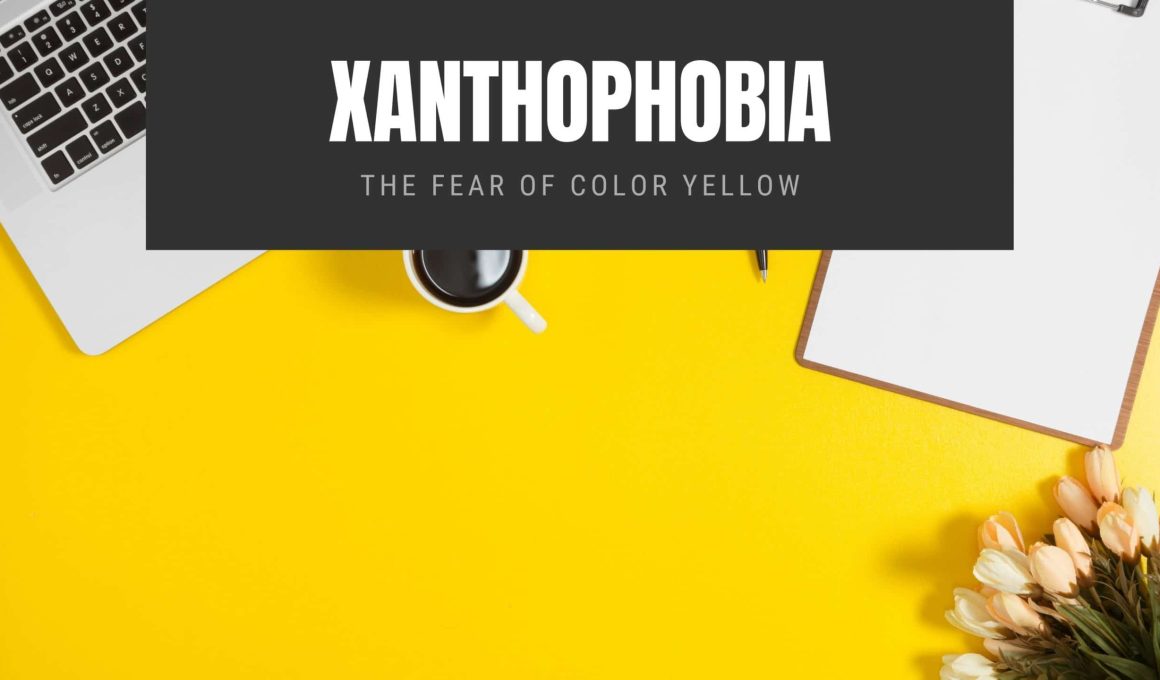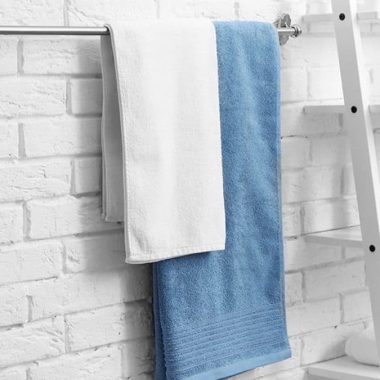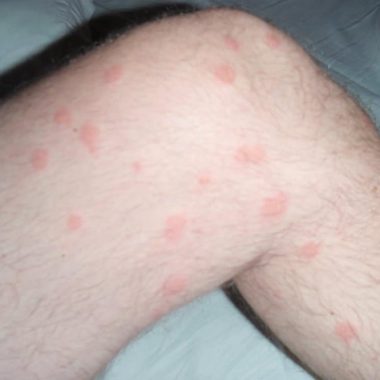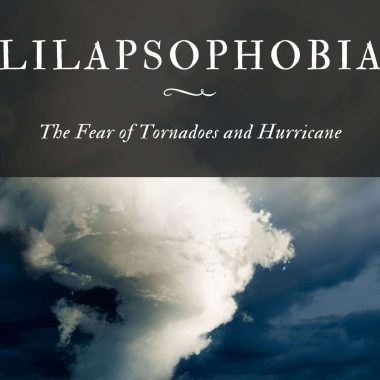The irrational fear or hatred of the color yellow is known as xanthophobia. Individuals suffering from this disorder should expect a very high degree of anxiety from simply thinking about the color yellow, let alone ever seeing it.
Ultimately, the anxiety can be so severe that they may even experience a full-blown panic attack. While such an influx of anxiety would not always be the case for those who have xanthophobia, it is still quite possible.
Among several other symptoms, anyone having a full-blown panic attack as a result of their xanthophobia may expect to have an elevated heart rate, higher blood pressure, increased respiratory rate, muscle tension, trembling, and excessive sweating.
While panic attacks may not always be the case for anyone with symptoms of xanthophobia, particularly if their symptoms are very serious, they can still occur.
Anyone with xanthophobia may avoid yellow objects or anything that has the color in it. Extreme measures could be taken to ensure they are not exposed to anything yellow.
Someone with this disorder can refuse anything with yellow in it and prevent anything with yellow in their home.
Major causes of their mental distress are likely to be undue concern and irrational thoughts.
Anyone with this condition might actively suppress their fear to help them minimize their risk of feeling any acute anxiety.
This can also exacerbate their xanthophobia symptoms in the long term because by putting in more effort to avoid their object of fear, they are also justifying their phobia.
Symptoms of Xanthophobia
Someone with xanthophobia should expect fear to be the most prominent indicator of their condition, as is the case with any other phobias.
As previously mentioned, their distress can also be so intense that, as a result of it, they can also suffer full-blown panic attacks.
They might also have to be hospitalized, depending on how severe their panic attack is. However, this will vary from person to person and will be based on several variables.
In addition, a person with xanthophobia can undertake painstaking efforts to ensure they do not, in any way, come into contact with their fear.
This may suggest that they not only avoid places where they may come into contact with their anxiety but also that by taking a more proactive approach, they can consciously try to prevent it from occurring.
Below are more common symptoms of xanthophobia:
- Anxiety
- Constant avoidance of material that has yellow in it
- Difficulty coping with anxiety
- Shakiness, muscle tension, and sweating
- Panic attacks
Causes of Xanthophobia
There are no conclusive causes of xanthophobia. Nonetheless, genetics and one’s environment can play very important roles in the development of this disorder.
For instance, someone with a family history of mental illness, particularly anxiety disorders or particular phobias, might be more likely to experience xanthophobia.
This may be because they then have a genetic predisposition to experience mental illness typically.
If anyone were to have such genetics, for them to develop full-blown xanthophobia, it might only require that they undergo some form of a traumatic incident.
Therefore, an in-depth look at these two distinct parameters may illuminate whether you may be at risk of developing xanthophobia.
Treatments
Much as there are no definitive causes of xanthophobia, there are still no explicitly formulated therapies for this disorder either.
However, several different types of therapy are still available that can help to relieve several symptoms of xanthophobia greatly.
Treatments of xanthophobia include exposure therapy, psychiatric medications, and cognitive-behavioral therapy ( CBT), among others.
Dialectical Behavior Therapy (DBT)
For individuals struggling with emotion control, dialectical behavior therapy is a very successful method of care.
It is also used to treat people with borderline personality disorder. However, DBT can also favor those suffering from anxiety disorders such as xanthophobia.
This is due to the many coping abilities that you would expect to acquire in a DBT class. Usually, these groups last around six months and may have anywhere from two individuals to many individuals, depending on how many people are involved.
Half-smiling is a very useful DBT skill for treating xanthophobia. This method makes you think about what scares you by softly smiling and slightly raising the sides of your mouth, hence the word “half-smiling.”
But it is not enough to think about what scares you while half-smiling; you also have to avoid entertaining certain painful emotions that might evoke your fear of yellow.
Mindfulness therapy is also commonly used in DBT, and when it is performed in a group, it can greatly support those with xanthophobia, which helps to bring the patient out of their daily routine.
You are also encouraged to hone in on your sense of taste by drinking tea. Breathing exercises are also required to help you focus better.
Another very valuable DBT trait that can assist those with xanthophobia is coping ahead. You can find a place to settle down peacefully without distraction so you can cope ahead.
Have your eyes closed and think of the potential situations you can face and resolve or cope with your particular fear.
Yoga
Several yoga poses can significantly help anyone with xanthophobia. This is partly due to the serene state of mind that yoga consistently generates in its practitioners.
It is possible to think of Yoga as meditation in motion. Engaging in yoga can help alleviate some of the anxiety related to xanthophobia because it diverts the mind to something more positive.
Someone with xanthophobia can take advantage of many styles of yoga, such as hot yoga or hatha yoga, among many others.
Nevertheless, nearly all of them can help to alleviate some of the tension and anxiety linked with xanthophobia.
If you have never practiced yoga before, it might be in your best interest to take a class or watch directed videos to help you through each pose.
The more yoga you practice, the more adept you will become at it, much like meditation.
You should also expect to achieve improved strength and flexibility, among other advantages, in addition to helping you to reduce the symptoms of xanthophobia.
Cognitive Behavioral Therapy (CBT)
A psycho-social intervention aimed at improving one’s mental health is referred to as CBT. It is a tool that is commonly used to treat individuals with anxiety disorders such as GAD (generalized anxiety disorder) and OCD (obsessive-compulsive disorder).
Someone with xanthophobia can also take advantage of CBT as well as seeing how it will allow them to have a much clearer understanding of why they think and act about their irrational fears of the color yellow.
Given the sheer automaticity of their symptoms, CBT can be extremely beneficial for anyone with xanthophobia.
For instance, they will almost always have an immediate, subconscious reaction to their worry and fear of anything yellow.
Such a lack of introspection may be a large part of why anyone with this disorder will struggle to the extent that they do.
CBT will help you step back and more thoroughly examine your worries than usual.
In addition to learning to be more meticulous concerning knowing one ‘s particular fears, anyone participating in CBT with xanthophobia may also expect to develop various skills to help alleviate the anxiety induced by their disorder.
Mindfulness-Based Stress Reduction (MBSR)
MBSR is an 8-week evidence-based curriculum that includes secular, comprehensive instruction in mindfulness to assist people with anxiety, stress, depression, and other kinds of mental distress.
As mindfulness meditation has proven to be very helpful for anxious people, MBSR may be able to support someone who suffers from xanthophobia significantly.
Someone with a fear of yellow can expect to learn an extensive set of skills in such a structured program that can help them alleviate the extreme anxiety associated with their particular phobia.
You can meet with your doctor or therapist to see if MBSR can help you minimize the severity of your xanthophobia symptoms and the position of your area’s MBSR services.
Exposure Therapy
One of the most effective approaches to treating anxiety disorders such as xanthophobia is exposure therapy, as earlier described.
It can be an important way of helping the patient desensitize to their fears. However, the therapist must be qualified before incorporating it into their patient’s treatment.
For instance, if the therapist were to introduce someone with a marginal fear of yellow, it would not be very successful because they would need more exposure to induce any beneficial patient shift.
It is also important for people with a fear of yellow to have a therapist who would implement exposure therapy and have a very good understanding of how serious their symptoms are.
This is so that they can recognize the amount of exposure that the patient is likely to be able to handle.
Reducing Caffeine
Consuming large quantities of caffeine can make you more nervous during the day. This makes sense when we consider how caffeine changes the physiology of our body.
The heart can beat rapidly with a high caffeine intake, and we become tenser. “Our body may enter a ” fight or flight” mode. For those with xanthophobia to experience panic attacks, such a state of mind is also a precursor.
Therefore, consuming little to no caffeine during the day will substantially help decrease possible feats of anxiety.
Certain energy drinks and beverages, such as coffee and tea, are also high in caffeine. Some foods, including dark chocolate, also contain caffeine.
Being more mindful of your everyday caffeine intake can help reduce some of the xanthophobia related symptoms.
Psychiatric Drugs
- Antidepressant Drugs
These types of drugs are not only for people suffering from depression, but they can also benefit people with anxiety disorders. Paxil, Lexapro, and Zoloft, amongst many others, are some popular antidepressants. Any of the effects of xanthophobia may be suppressed by these medications.
Usually, these types of medications are taken regularly. They can also help avoid the incidence of panic attacks, but they are most commonly used to help reduce the everyday anxiety of people. Meet with your doctor to see how they can help you reduce your symptoms of xanthophobia by taking antidepressants. You can also find out if it is safe to do so.
- Anti-anxiety Drugs
To help avoid panic attacks, anti-anxiety drugs are very useful. Because people with phobias very frequently experience panic attacks, such medications can be particularly beneficial for individuals suffering from a serious fear of yellow. Klonopin, Xanax, Valium, and, among many others, are some popular anti-anxiety drugs.
Usually, these types of drugs are taken regularly; however, before you decide to do so, this is something that needs to be addressed with your doctor to guarantee that it is safe.
Exercise
Exercise, like xanthophobia, has shown to be highly helpful for people suffering from anxiety disorders. Cardiovascular exercise, in particular, can greatly help alleviate stress.
This is not to suggest that training for weight resistance doesn’t help anyone with anxiety. Still, aerobic exercise has proven to be more efficient in releasing chemicals like endorphins that feel good in the brain.
The American Psychology Association claims that exercise can help train the mind to better cope with stressful conditions. This is reasonable considering the high amount of stress the body experiences during strenuous exercise.
Sedentary people who engage in some aerobic exercise may experience minimized symptoms of xanthophobia substantially by making it much easier for them to deal with the anxiety and stress associated with this disorder.
Activities such as swimming, biking, skiing, walking, and jogging are aerobic modalities you can engage in to help alleviate the symptoms of xanthophobia. By playing sports such as tennis, basketball, soccer, and racquetball, among many other sports, you can also take advantage of exercise.
Consistently participating in some form of exercise can help to alleviate some of the xanthophobia related pain over time.
Meditation
Anyone who has xanthophobia may practice different ways of meditation. In particular, meditations on mindfulness have been proven to be very effective in helping individuals to reach a calmer state.
There are many ways to practice mindfulness meditation, and different meditation applications are designed to make it as simple as possible.
Mindfulness can benefit those suffering from the fear of yellow because it can distract a person from their anxiety by refocusing their mind on something else that does not have any emotional baggage. This is one of the most fundamental ways to meditate and be present.
In the middle of a panic attack, someone with xanthophobia may try redirecting their mind to the different sensations as a way to potentially minimize the amount of mental anguish encountered during such an influx of anxiety.
Careful attention can be paid to the muscles in your abdomen and chest. You can control the contraction and relaxation as you inhale and exhale to implement mindfulness meditation and help alleviate your fear of yellow.
You can also concentrate on the sounds around you, the way your skin feels against certain objects, the taste of food, and the smell of other things that have your attention, in addition to concentrating on your breathing.
Essentially, it will greatly enable you to control some of the anxiety associated with xanthophobia by tapping into your five senses.
Also, note that being an adept concentration would require plenty of practice. Ultimately, practice is important.









